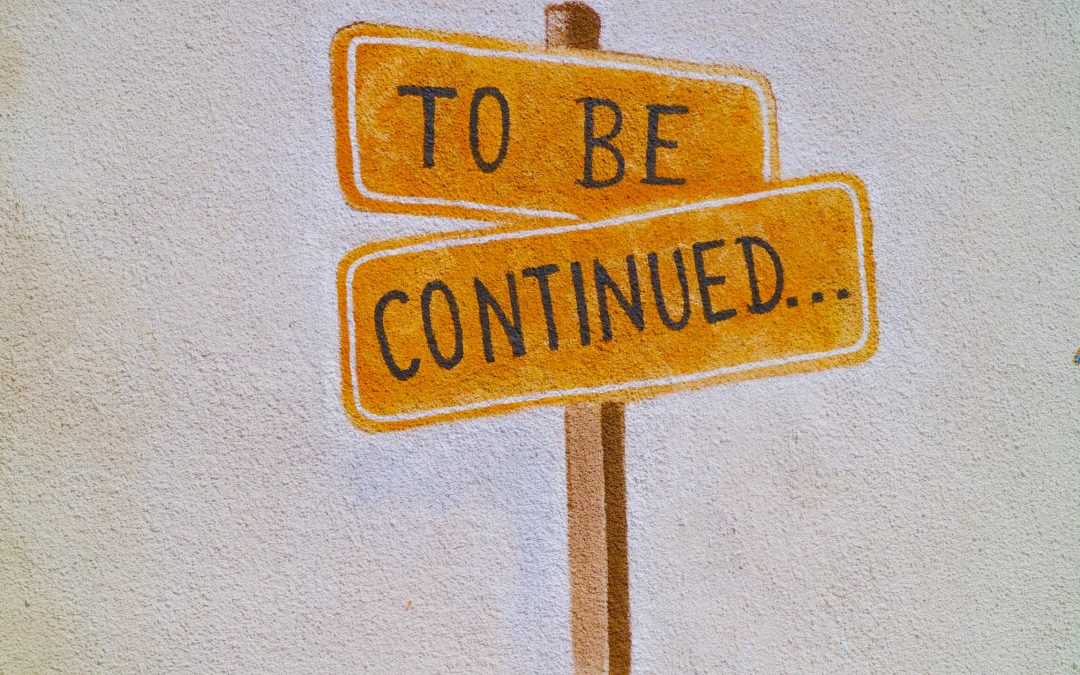
by Jane Helm | Nov 4, 2021 | Finances, Goals
Chances are you’ve probably tried to budget at some point in your life. Trying to get a handle on your monthly cash flow can be an overwhelming project. As a Financial Coach, I spend a lot of time helping my clients get clarity on what their budget numbers are, and how they fit into a plan that will give them peace of mind. But what should you do if you just don’t have enough to make “ends meet?” It could be that you have an income problem, and need to find additional sources of cash coming into your household. More often, the challenge is a spending problem! We all have some sneaky expenses that we take for granted. These can derail the best-made plans! Here are some suggestions on expenditures that you may be able to do without, in order to increase your bottom line:
- Fast Food: a recent study found that the average American household spends about $100 a month on fast food. We all know that this type of food is probably not the healthiest option in providing nourishment. By taking the time to prepare food at home, you are able to eat healthier and save money.
- Prepared Packaged Food: with our busy schedules it’s tempting to buy grocery items that may be pre-cut, or ready to cook. Did you know that these food items cost an average of 80% more than foods that may need to be chopped, cut, or pre-cooked? Taking the time to prepare your food can save you hundreds of dollars
- Name Brand Products: when grocery shopping, take a look at the labels of a store brand vs. a name brand. What you will find is that they contain the same ingredients! Grocery stores pay the name brands to make the same product without their labels, and they are sold at a significant discount.
- New Books: if you love to read, remember the local library! You can download books and magazines. Not only are you saving money, but getting your reading materials this way is environmentally friendly.
- Bottled Water: This is an upgrade that most of us take for granted. Rather than spend money on bottled water, invest in a good filtration system and buy yourself a reusable water bottle. Again, this is an economically and environmentally approach to getting your hydration.
- Bank Fees: if you are paying a bank a monthly fee due to account minimums or overdrafts, it’s time to re-evaluate your banking choice. Take some time to find a bank account that does not require a minimum balance. The average minimum balance fee is $5.00/month. By not paying this, you have now added $60.00 a year to your cash flow!

by Jane Helm | Aug 25, 2021 | Finances
Saving money can sometimes feel almost impossible!
There is always a need to have more savings. Whether it’s to shore up your emergency fund or build your retirement accounts, here are some steps you can take to begin or maximize your savings.
Here are some suggestions that can supercharge your savings:
1. Implement a “Spending Freeze” We all know that living below your means is a way to have money left over each month to put towards savings. To implement your spending freeze, choose a period of time where you commit to spending only on your needs: groceries, housing, transportation, and insurance.
This will allow you to evaluate how much you’ve previously been spending on your wants. You could also do a variation on a sending freeze where you decide to eliminate spending in a particular type of purchase: think about past regrets around your spending. Is there a pattern of spending that always seems to result in remorse?
By intentionally not spending in this category, you won’t be subjecting yourself to the frustration of experiencing that icky feeling again.
2. Practice the Pause This tip has saved me thousands of dollars! By implementing a waiting period on the wants that I have had, I have found that 24 hours later, I have either forgotten about that item, or I have found something else that I want!
Start by waiting a day before you spend on anything that is a want. Delaying your gratification can be challenging, but is a skill that will save you a lot of money.
3. Evaluate Your Subscriptions Take some time to research which subscription services you have.
There are two questions to consider with your subscriptions:
- How much are you using the subscription?
Perhaps you have a streaming service, but you find that you’re not really watching the shows they offer.
Are you enjoying or using all of the products you receive, or could you do without them?
- How much are you spending on this subscription?
Even if you are spending $10 a month, you could be putting that amount towards your savings goals! Remember, every little bit adds up! I recently went through this exercise with a client who ended up saving over $2800 a year! Boom!
4. Unsubscribe to retail emails that are tempting you to part  with your money! Have you ever noticed that there a constant sales and special offers from these stores? These promotions are designed to tempt you!
with your money! Have you ever noticed that there a constant sales and special offers from these stores? These promotions are designed to tempt you!
By eliminating these from your inbox, you are removing the temptation!
5. Pay attention to your emotions! Never shop when you are experiencing negative emotions like boredom, loneliness, or anger. We tend to make poor spending choices when we are in a triggered state.
Buying something in those moments may seem like it makes you feel better, but it will be a temporary fix and could lead to regret.
6. Sell what you’re not using! We all have too much stuff! It’s never been easier to sell your unwanted items.
Here are some websites that can make selling unwanted clothes, accessories, and other items super easy:
www.Poshmark.com
www.threadup.com
www.offerup.com
www.decluttr.com
7. When you are tempted to spend on a want, think about how much time it took you to earn the money that you are about to spend. If you make $20/hour after taxes and want to buy something that costs $200, that equates to 10 hours of work! Is it worth it?
8. Plan your grocery trips! By taking the time to plan a week’s worth of meals and making sure you have every ingredient you may need will save you from making extra trips to the grocery store, making it less likely that you will be tempted to buy the extra impulse items that end up being sneaky little expenses that add up.
9. Put yourself on an allowance! Based on your cash flow, determine how much you can spend responsibly on extras. You may want to incorporate the envelope system for this spending by taking cash out of the bank and using it exclusively for your fun money. Using a credit or debit card tends to be more mindless than actually budgeting your cash.
10. Celebrate your saving milestones! We all like to be rewarded for achieving our goals! When you set a specific goal in terms of how much you want to save, include a reward amount that will pay for something that brings you joy, without derailing your hard work! Add the cost of this reward to your savings goal so that you can reap the reward and know that you can afford it!

by Jane Helm | May 12, 2021 | Book Club, Personal Development
I have read Marie Forleo’s book, “Everything Is Figureoutable” twice, once because I loved the title and was intrigued. The second time was more recently, as I prepared for the Book Club meeting I am leading later this month. I am grateful for the main theme of this book that we have the power to figure out any challenges that may arise in our life!
As a Neurocoach, I work with my clients on mastering their mindset. This book is all about the mindset – the key to transformation! Our mindset is responsible for most of our success in life! It’s our core beliefs, thoughts, and emotions that drive our behavior and results. By embracing the core belief that we can figure out anything, we are creating thoughts of empowerment. By approaching our life with a “can do” attitude, we are setting ourselves up for success!
There are key concepts in this book that can elevate you to embrace the mindset of being able to figure out anything:
- The Magic of Belief: our beliefs are the main source of “why we do what we do.” By digging deep into your core beliefs and understanding which are serving you and which ones are holding you back is a pivotal exercise in approaching your life with a proactive mindset.
- Eliminate Excuses: we all have made excuses as to why we haven’t achieved something! Excuses are a result of our brain doing its job-keep you in safe and familiar territory! Beyond that, we have the ability to examine what our inner voice is saying. Is it saying, “I can’t?” or is it really saying, “I won’t?” Discriminating between these two phrases can add powerful insight as to how excuses may be holding you back.
- Dealing with Fear: As Marie states, “Fear is not the enemy. Waiting to stop feeling afraid is.” Fear is a natural emotion that dates back to our earliest days as humans. In those early days, fear kept us alive! Recognizing that fear is not our enemy, but a signal of something to pay attention to, to move us forward, inspiring us to act. Action is the anecdote to fear!
- Define Your Dream: What is it that you really want? In order to achieve any goal or dream, you need to clarify what that means and commit to it. Maire says, “You wouldn’t have the dream if you didn’t have what it takes to make it happen.” She has five specific steps to follow to make your dream a reality:
- List your top one-year dreams: be brutally honest about what you want!
- Get real about this dream: narrow down your list based on the ones that make your heart jump! Then get curious about how important this dream is and the degree of difficulty you may face in pursuing it.
- Choose One! Choosing a primary dream will require your focus to achieve it!
- Make It Specific, Measurable, and Actionable: use simple and clear baby steps to cultivate mental, emotional and behavioral discipline in moving forward.
- Determine Your Next Three Steps and Get Started Now: resist your mind telling you that you are not ready yet!
- Start Before You Are Ready: don’t let your mindset talk you out of getting started!
- Focus on Progress, Not Perfection: think of five small things you can do now to move a project or goal forward: breaking down your action steps into smaller micro steps can lead to big progress!
- Refuse to Be Refused: don’t let the fear of judgment. Think of your goal or dream as something beyond yourself.
- The World Needs Your Gift: If you believed that everything is figureoutable, what would you do?
I am looking forward to the May Book Club, where we will have an interactive discussion around these key concepts and encourage each other to adopt the mindset of knowing we got this!

by Jane Helm | Apr 15, 2021 | Change, Goals, Gratitude, Happiness, Jane Helm, Personal Development, Professional Development, Self-Care
The pursuit of happiness has long been the goal of humankind. But, what is happiness? For us, it could be a feeling of calm and security. For others, it may be a feeling of success on a professional and/or personal front. Happiness is truly subjective! One of the keys to unlocking the path to being happy is to practice mindful happiness.
Mindfulness is defined in the Oxford Dictionary as, “a mental state achieved by focusing one’s awareness on the present moment, while calmly acknowledging and accepting one’s feelings, thoughts, and bodily sensations, used as a therapeutic technique.” So how does mindfulness increase our feelings of happiness?
By utilizing the power of awareness of the present moment, we allow ourselves the opportunity to connect with our heart, mind, body, and spirit with crystal clear transparency. When we allow our thoughts to be focused on the “now,” we invite our clarity to serve as a compass, guiding us toward the happiness that may have eluded us in the past.
When practicing mindfulness, we pay close attention to the signals that our bodies are sending us, those pangs of guilt, shame, regret, and learning to bless and release them through allowing those signals to remind us that we are a work in progress. Through the mindfulness practice of breathwork, we empower our bodies to cleanse some of the adverse biological reactions that our bodies and minds have created in reaction to our perception of the lack of happiness.
Mindfulness is a skill that takes practice! Our bodies and minds have a natural tendency to fight stillness. If you have tried meditation and find your mind racing with that list of “to-dos” or constant distraction, it’s not your fault! Our brains are designed to be the operating system that we rely on both consciously and subconsciously. Taking some small steps in quieting your mind will lead to training your brain to power down temporarily. Here are some steps to try when working on quieting the mind:
- Find a space that will allow you solitude and quiet
- Start with an intention of a short time period, perhaps 5 minutes. You can always increase this as you increase your skill level!
- Pay attention to your breath. Using this awareness as a focus increases the release of stress hormones, like cortisol and adrenaline, and increases the “feel good” chemicals such as serotonin and dopamine: both of which are “happiness hormones.”
- Notice your body: find a seated position that is comfortable to you and that will allow you to relax.
- Allow your mind to wander. Remember, when your mind is sending you messages, it’s doing its job! Work on recognizing the thought without judgment.
Mindful happiness occurs when we align our mind, body, and spirit with our unique strengths. Happiness is not a destination, but a journey of the authenticity of our truth, a lifelong practice of pursuing a wholeness that is genuine and unique to each of us. Each moment in our life gives us the opportunity to be keenly aware of the path to follow, even if it’s one that you need to create. By following your individual journey through mindfulness, you will own the key to creating a life of fulfillment, which in my view is “happiness.”

by Jane Helm | Feb 1, 2020 | Finances, Jane Helm
Have you ever thought about writing your autobiography? Chances are, it sounds daunting! To recapture your life and all that’s happened may take quite a bit of time and energy. Who would you write it this for? Documenting your life experiences would be an interesting read for your family and could serve to pass down some wisdom you have gleaned through your lifetime.
Your Money Story is a piece of each chapter of your life. It is uniquely yours, as there are no two stories that are identical. Although writing your story may feel as daunting as an autobiography, it can be broken down into specific chapters, that when pieced together, can impart some important clues around how your beliefs are driving your emotions around money. Even more interesting, how these are affecting your behavior with money.
Having written my own Money Story, I can attest to many “aha moments” that have given me insight into “why I do what I do” with money. As I have been working on my story for several years, I have learned that by documenting each chapter I have been peeling back layers of messages and emotions that hadn’t been leading to the behavior I knew I wanted to embrace.
We’ve all been given sage advice as to the best ways to manage our money, such as “spend less than you make,” or “pay off your credit card every month.” But turning this guidance into action steps is a struggle for many of us. In my past, I would beat myself up for the decisions I made, because I knew better…
I knew that spending more than I was making wouldn’t turn out well. I knew that my increasing credit card debt was going to lead to more worry, stress, and guilt. I kept asking myself, “what’s wrong with you?”
As it turns out, nothing was wrong with me! The unhealthy money habits were a result of a disconnect I had with my money story: mixed messaging, misguided perceptions, anger, and fear around money made for a perfect blend of a looming disaster. I hit rock bottom twenty- five years ago. I was broke and broken-not able to muster up the energy to tackle the enormity of my situation. The isolation was the frosting on the cake of my situation and carried my mindset to an all-time low.
It wasn’t until I started digging deep into my story that I could start my own journey to financial confidence. By unraveling my perceptions, and getting curious about my emotions I began to understand my behavior with money. Little by little I began making different types of decisions that were based on the emotional outcome I so desired, using that emotion as a guidepost in my everyday spending decisions. I was in the early stages of changing my goal from paying off a HUGE amount of debt to making decisions that would result in building my confidence.
I have written my Money Story! Each time I reflect on it I have new insights to incorporate into the story, leveraging my awareness of some behavioral blind spots, or messaging that can linger for decades. The transformation that I have experienced is a big part of why I founded my financial coaching business. I believe that everyone deserves clarity around their money behavior that can lead to a life of stress- free money management. Using our money story as a tool to build awareness, along with a plan to leverage the numbers we are working with can lead to a truly holistic approach to money management.
Brad Klontz, author of “Mind Over Money,” and founder of Yourmentalwealth.com, states, “Recognizing that our financial habits make sense given our history and the beliefs we internalized about money allows us to reflect on our financial mistakes with compassion and grace.”
By authoring your money story, you will triumph over the habits that are holding you back from reaching your financial goals, and give yourself the compassion and grace that will allow you to get un-stuck. Get ready for the next chapter of your Money Story to finally be told from the perspective of confidence!



 with your money! Have you ever noticed that there a constant sales and special offers from these stores? These promotions are designed to tempt you!
with your money! Have you ever noticed that there a constant sales and special offers from these stores? These promotions are designed to tempt you!

